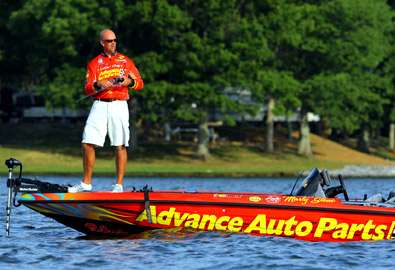
The concept of pattern fishing for bass was first defined by Roland Martin in 1969: "A 'pattern' is the exact set of water conditions such as depth, cover, structure, temperature, clarity, currents, etc., which attracts fish to a specific location and to other similar locations all over the same body of water." In Pro Patterns, we interview a top bass fishing expert to get insights and details of his favorite pattern that will help you catch more and bigger bass. Print these patterns to create a notebook that will help you catch bass anywhere and anytime.
Marty Stone of Fayetteville, N.C., is a two-time BASS winner and an Elite Series pro with a reputation for throwing a spinnerbait. He knows that there are times and places when the "blade" will catch more and bigger bass faster than any other lure. "Stone Cold Marty Spinnerbaiting" is a pattern that will keep you ahead of the crowd in spring, and, when conditions are right, it can win a tournament, too.
Seasons
Spring
Water Conditions
Water temperature: 54-66 degrees
Water color: Stained (6 inches to 2 feet of visibility)
Wind/current: When there's no wind or current, this pattern will produce during the first few hours of the day. If there's current and light conditions are low, the bite can last all day long.
Structure/Cover
Structure: Secondary points of major creeks.
Cover: Flooded willows, sweet gums, buck bushes and other wood cover.
Depth: 2-5 feet
Tackle
Lure: 1/2- or 3/4-ounce Picasso spinnerbait with double willowleaf blades and a white and chartreuse or white skirt
Rod: 7-foot American Rodsmiths Team Series Marty Stone signature casting rod (medium action)
Reel: Browning Midas MI10SHA with a 6.4:1 gear ratio
Line: 20-pound-test Vicious monofilament
Presentation
Cast/Flip/Pitch: Cast
Retrieve: Slow to medium so that the blades of the spinnerbait are deep enough that they are just out of sight during the retrieve. Bounce the bait off cover whenever possible.
Keys to Success
This is a strong pattern, but the presence of a shad spawn can make it even better. Watch for shad flipping and moving to get away from the bait. If you see this type of activity, the shad are likely spawning.





